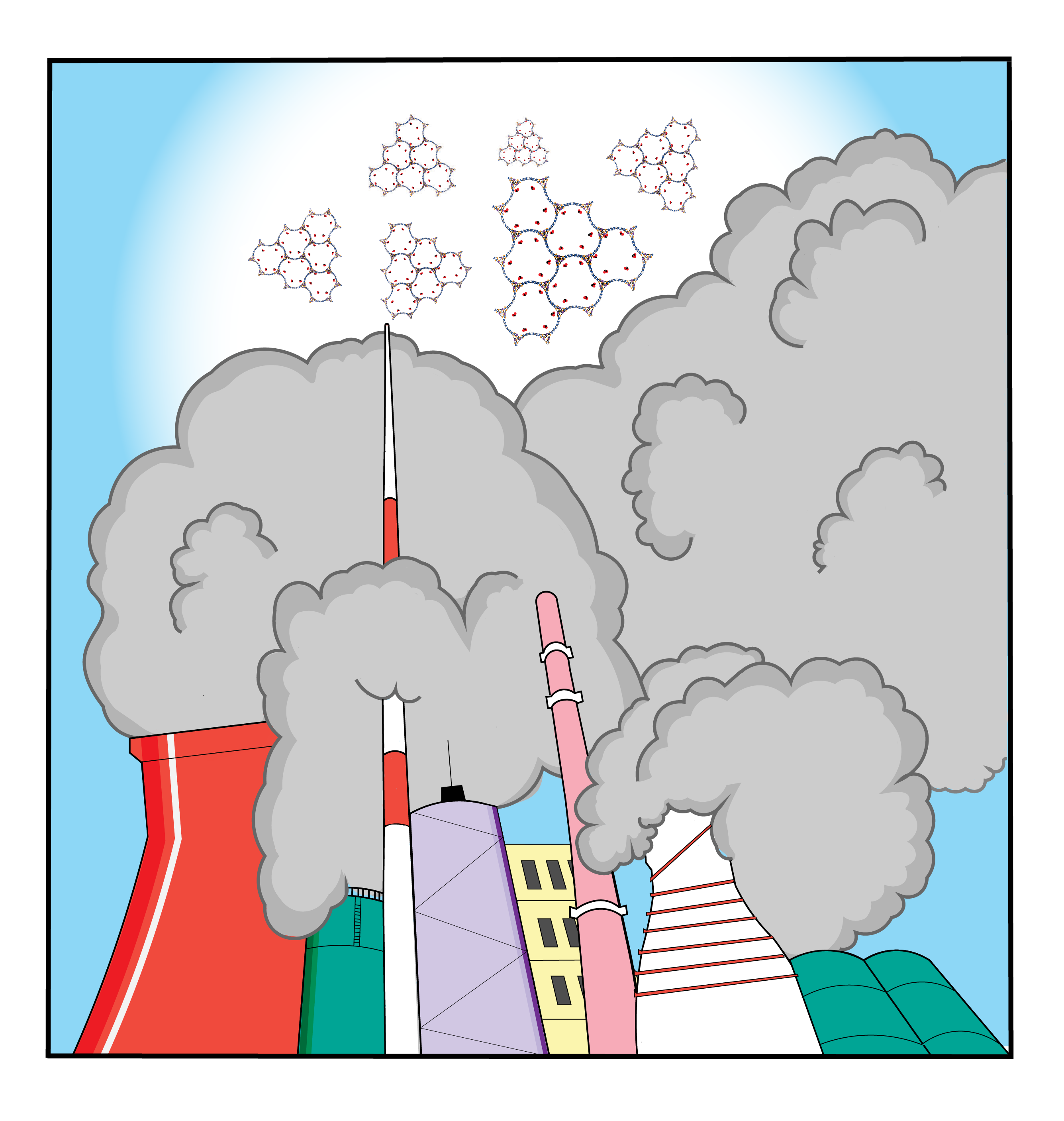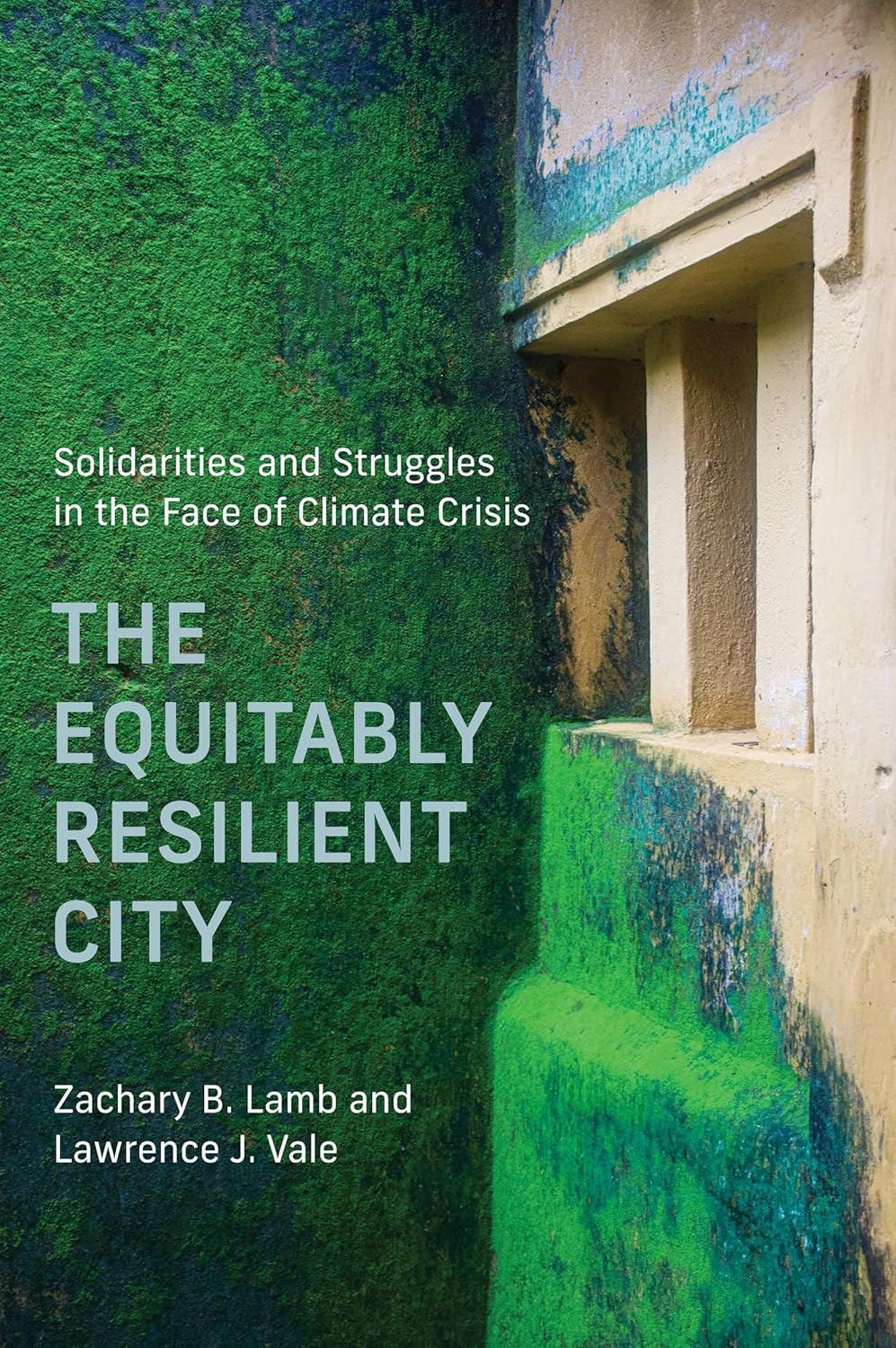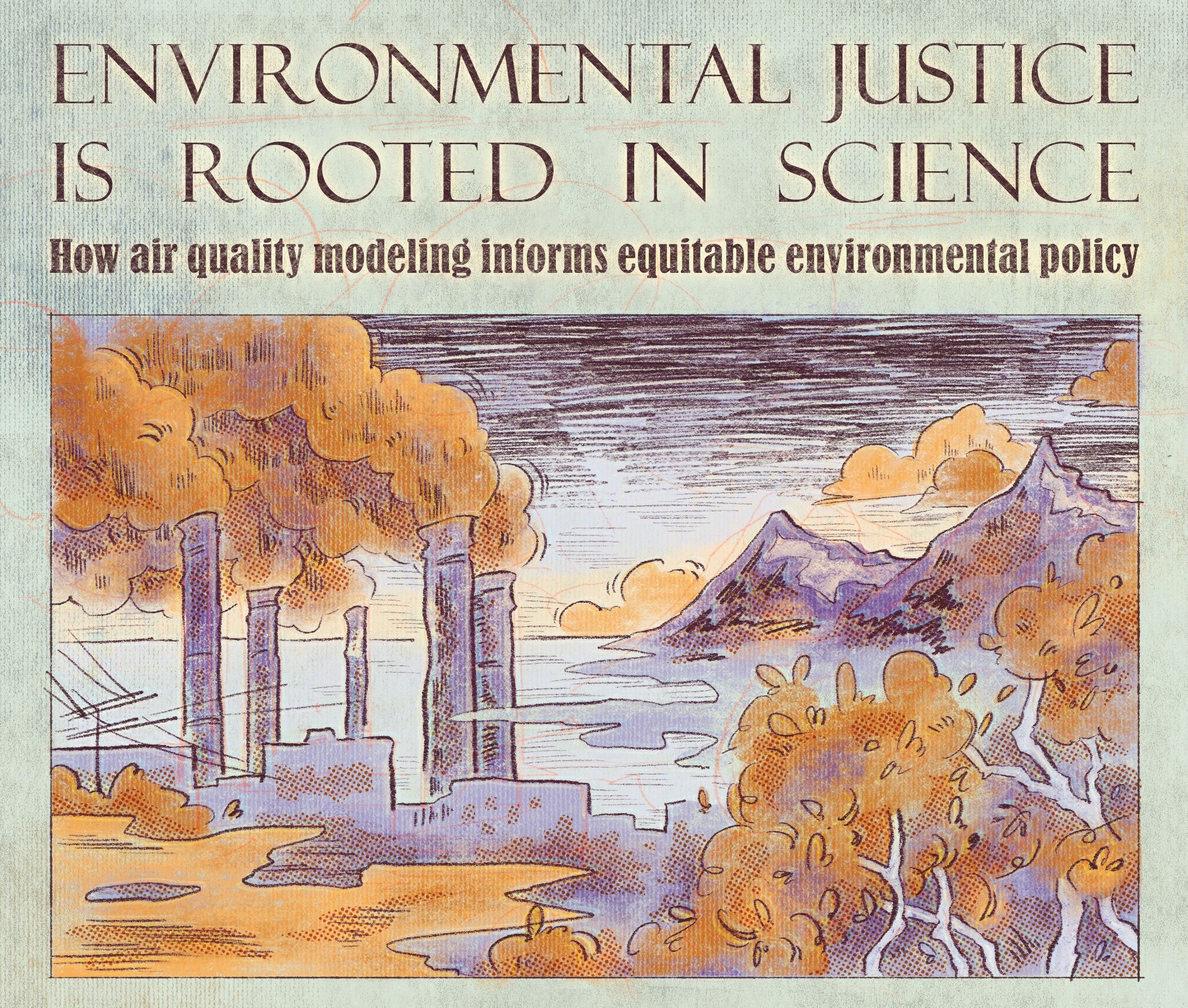We capture the carbon

The fuel we use every day to power our homes and communities is produced in power plants. Globally, power plants are the largest single contributor to greenhouse gas emissions, but what if we could reduce the carbon emissions directly from coal and natural gas power plants? Jeff Long’s group in the College of Chemistry is working on novel materials to make that possible.
Flue gas is a product of combustion power plants that contains a large concentration of carbon emissions—carbon dioxide, carbon monoxide, and other polluting substances. Capturing CO2 directly from flue gas helps to reduce the environmental impact of fossil fuel power plants. Current technology for flue gas carbon capture is limited by short operating lifespans due to chemical degradation and inefficient reuse. However, novel research has led to technologies that may improve upon these issues—enter metal-organic frameworks (MOFs).
MOFs are porous materials consisting of metal nodes, and organic (carbon-based) linkers. In a recent study by the Long group, researchers designed a MOF with novel organic linkers that mimic the current carbon capture technologies in use at power plants. In testing and characterizing this new MOF, the group discovered a mechanism for how molecules bind at the surface of the material. This mechanism—known as cooperative adsorption—works by using CO2 bound to the framework to enable binding of additional CO2 molecules. This property supports better saturation, minimizing the amount of CO2 escaping the MOF.
The Long group’s research highlights the development of new materials for carbon capture technology, which are needed to reach our global net-zero carbon targets. Replacing existing technology at power plants with new material makes the system more energy efficient and resistant to chemical exposure, resulting in overall improved performance and lower carbon emissions. This is critical as we work our way through the energy transition, and in difficult to decarbonize sectors.
------- Stephanie Collins is part of the BERC
Design by Kahima Ford
This article is part of the Fall 2022 issue.




